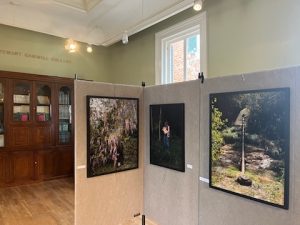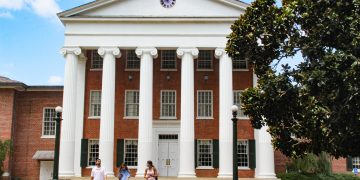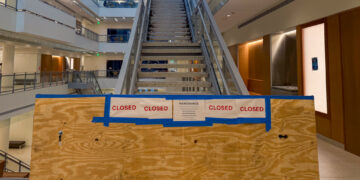
SouthTalks, a weekly program hosted by the University of Mississippi’s Center for the Study of Southern Culture, is hosting Allison Grant, an artist, writer, and assistant professor of photography at the University of Alabama, this Wednesday, Feb. 22 at 5 p.m. The event is a gallery walk, and will showcase her photography exhibit, “Within the Bittersweet.”
Grant described the project as a creative endeavor that considers her experiences of raising her daughters in the early stages of climate change, and in a place where toxic contamination from chemical and fossil fuel industries is prevalent.
“When I had my first daughter, I was surprised by how much dread about climate change suddenly entered my life,” Grant said. “Ultimately, the project came to piece together landscape and domestic photographs as I consider the beauty and heartbreak of raising children in this time of unprecedented change.”
The photographs in the exhibition were taken in and around Grant’s home in Tuscaloosa, Ala., and provide a personal connection to climate and the environment. Her main goal in creating the exhibition was to make space for contemplation and consideration of the environmental issues of our time at the intersection of personal, political and spiritual.
At the time Grant first moved to Tuscaloosa, she was pregnant with her second child. One day, she was driving to pick up her daughter from school when she saw a chemical facility on fire behind the playground of the school. The air was thick with black smoke, and she quickly began to photograph it. Later, she learned that the facility handles a toxic carcinogen.
“The experience brought my environmental concerns into the present again, and I learned that there was a lot more contamination from fossil fuel extraction, the very same industries contributing to climate change,” Grant said. “I expanded the project and started photographing these sites.”
Grant’s photographs for the exhibit span six years of work. She described the style of her work as dark pastoral. She believes there is a complex type of beauty ridden with uncertainty alongside images where she negotiates her own identity and her daughter’s identities as they grow from babies to young women.
Some of the photographs are family portraits of her daughters in nature. Others are depictions of human effects on nature. One photograph shows piles of logs being hosed down in order to avoid burning. Another shows a train yard, with smoke rising in the distance.
According to a 2021 study conducted by the Yale Program on Climate Change Communication, in Tuscaloosa County, Ala., 66% of people believe global warming is happening. That is 6% less than the national average. In Lafayette County, 70% of people believe global warming is happening.
The United States Environmental Impact Agency found that average annual temperatures in the region have increased by about 2°F, with the greatest warming occurring during the summer. Temperatures are projected to increase by 4°F to 8°F by the end of the century. There are also more predicted days over 95°F and fewer predicted freezing events.
“Grant’s work is timely given the effect climate change is having on seasonal weather patterns here in the United States but also internationally,” said Afton Thomas, associate director of programs for Southern Studies. “This exhibit provides a personal connection to climate and the environment.”
Thomas stated that The Center for the Study of Southern Culture has a committee of Center faculty, instructors, and staff in the Department of Art and Art History.
Together, the committee decides on the exhibits displayed in the gallery. Most exhibits have been of documentary photography since a lot of the student, faculty and staff work that comes out of the Center falls under documentary expression.
The gallery walk offers an opportunity for guests to walk around the exhibit, hear from the artist for fifteen minutes about the work and their process followed by an informal Q&A with the artist. The exhibit is scheduled to come down on Feb. 23.
“The gallery has an unusual setup because there are partitions for hanging artworks instead of gallery walls,” Grant said. “The exhibition feels a bit like a series of rooms that unfold like pages in a book.”


























